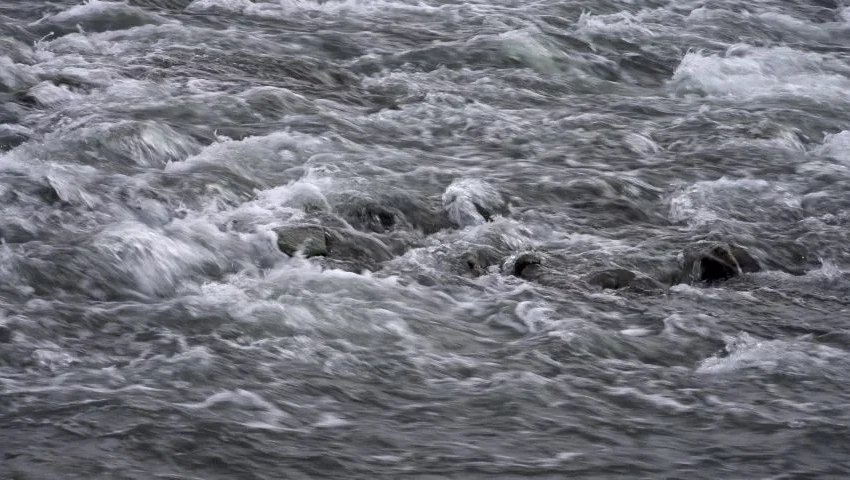
I propose that Lewin’s three stages are found in successful learning while navigating white water. I align the unfreezing with apprehensions that inevitably accompany our entrance onto the whitewater river. Learning occurs through the engagement of appreciation and by means of the interplay between two dimensions of significant learning—these being assimilation and accommodation. Furthermore, learning occurs in somewhat different ways in each of the four systems operating in the whitewater environment: rapid movement, cyclical movement, non-movement (stagnation) and chaotic movement.
Finally, learning on the turbulent river is best firmed up and reinforced in a setting which nourishes interpersonal collaboration. We retain and use what we have learned when we are joined on our boat by “fellow travelers” who are “co-learners” and “co-leaders.”
Apprehension: There are two psychic forces that swirl around us when standing on the shore of a raging whitewater river and anticipating that we will soon be entering this river in a kayak (or some less appropriate vessel). The first force is Awe. We look out at the river and find it to be awe-full: beautiful, surprising, treacherous, powerful. Keltner (2023, p. 13) writes about this kind of inspiring natural Awe. It is to be found in the witnessing of an earthquake, thunderstorm or wildfire. We stand passively on the shore. We deeply admire what we view in front of us. We also are fearful of what we see in front of us.
The second force is located at the other end of the spectrum from Awe. This second force is the prospect of Flow. It is under conditions of challenge that is matched with sufficient capacity that we experience the exceptional and uplifting experience of Flow (Csikszentmihalyi, 1990). We can anticipate the experience of Flow if we know that it is possible for us to be successfully challenged in navigating this whitewater environment. Our body is energized. Adrenaline kicks in and we experience one of the three primary stress responses. This is fight! We can do it!
Or can we? Is the river too strong for us? Do we lack the knowledge, experience or strength to guide our boat through the swirling water and down the raging river? Fear sets in. The adrenaline is now energizing one of the other two stress response. We want to run away or remain frozen.
We are apprehensive. Torn between fight, flight and freeze.
Appreciation: There is an alternative perspective to be taken regarding the turbulent river on which we soon might be afloat. We can breathe in the oxygenated air that accompanies the turbulent water and can savor the richly textured sounds of the tumbling water. We become satiated with the Awe rather than remaining fearful of the Awe-fulness. We can follow the flow of the river and envision finding Flow within our self while navigating on the river. We can view this as an opportunity to learn rather than as a prospect of failure. This is a teachable moment if we allow our self to dwell on the positive prospectives rather than the negative possibilities.
Download Article














